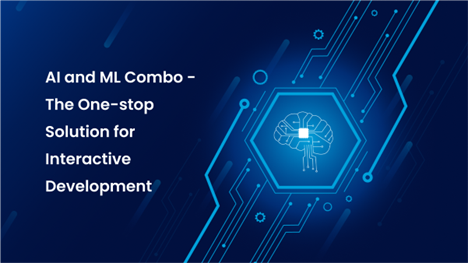Technology has evolved unprecedentedly in the past couple of decades. There have been notable developments on almost every technological front, but predictive technologies seem to be breaking all records. The developments in artificial intelligence (AI) and machine learning (ML) have made the digital world a much better place.
Both these technologies are now widely used across different areas to help people reap their benefits. Even the device you are reading this on uses AI or ML, or even both. However, there is still much confusion about these technologies and their potential among users. So, this article will walk you through all the nuances of AI and ML to help you get a better idea.
What is AI?
The definition of AI can vary. Minsky and McCarthy were the fathers of AI, which was in its infancy in the 1950s. Back then, these pioneers defined AI as anything that is now performed by machines, but which previously required human intervention or ingenuity. This is more of a broad definition of the term, leaving room for confusion.
A textbook definition of AI is the ability of a computing system to replicate human cognitive functions. These functions can be anything from learning to problem-solving, depending on the requirement of the situation at hand. AI allows a computer to leverage logic and math to simulate the reason humans learn from new information and make decisions.
What is ML?
AI and ML are similar to each other in a number of different ways. ML is an application of AI where there is a process of using mathematical models of data to help a computer learn. All the learning is carried out while ensuring no direct instruction for the computer. The system will continue doing a task and get better with time as it gains more experience and data in its journey. It is not very different from how humans learn something new and gradually hone their skills with more experience doing what they do.
 Are AI and ML Connected?
Are AI and ML Connected?
Of course, AI and ML are connected, but they are not the same. Instead, ML is more like a subset of AI or a way of AI application. Now, a computer system leverages the potential of AI to learn something new or even think like a human to perform different tasks by itself. But ML is the technology that allows the computer to develop its intelligence and improve with more time and data. These characteristics allow these technologies to come together and make things much easier for us.
How Do Both Technologies Interact With Each Other?
AI and ML are among the top technologies currently available in the world. Many experts from the industry also go as far as to say that these technologies are a breakthrough for humanity. Since both technologies share many characteristics, people often combine them to achieve a desirable result. But how do these technologies connect? They do so in four simple steps:
- Step 1: Engineers build an AI-enabled system using ML and other relevant tactics.
- Step 2: The system determines and studies the patterns within the data to create different ML models.
- Step 3: Data scientists then optimize these models based on the available patterns in the data.
- Step 4: The same process is repeated again and again until everyone is pleased with the accuracy of these ML models. Consequently, these refined and optimized models are then used to complete any specific task that a human would otherwise do.
What Can You Achieve by Combining AI and ML?
Humanity is yet to realize the true potential of AI and ML. But businesses from almost every sphere are making great strides to reap the benefits of these technologies. Combining both technologies offers many capabilities that businesses can use for different purposes. Let’s check out some of these capabilities you can get by combining AI and ML.
- Recommendation engines: Combining AI and ML can give you access to recommendation engines. Businesses can then use these engines to recommend products or services that people might be interested in. As a result, one can personalize their approach to marketing and drive better results.
- Predictive analytics: Predictive analytics has become an important tool for businesses in the 21st century. These tools allow businesses to predict behavioral trends and patterns by evaluating the causation and effect of relationships between data sets. Consequently, businesses can drive better decision-making that helps them generate better results with minimal effort.
- Image and video processing: Combining both technologies help businesses recognize objects, faces, and different actions within videos and images. They can then implement these features and functionalities to facilitate better and more efficient visual searches.
- Sentiment analysis: As the name suggests, this capability helps businesses analyze the sentiments and attitudes of individuals and the masses. The computer will use this capability to determine and characterize different sentiments, such as neutral, positive, and negative attitudes that people express in texts.
- Speech recognition and language understanding: Speech recognition has become prevalent in recent years. Here, the computer can identify and comprehend the words a person speaks to it. Following this, the computer will follow whatever command the individual has given. Natural language understanding helps the system recognize the meaning of any spoken or written language. These capabilities work great in translation tools.
Conclusion
As you can see, combining AI and ML is one of the most useful things for businesses in the 21st century. These technologies have the potential to help businesses realize their goals while delivering an unmatched experience to customers. So, make sure you hire Indian programmers who can help you leverage what this combination offers and grow your business accordingly.




